Flood Insurance – Why You NEED to Get It
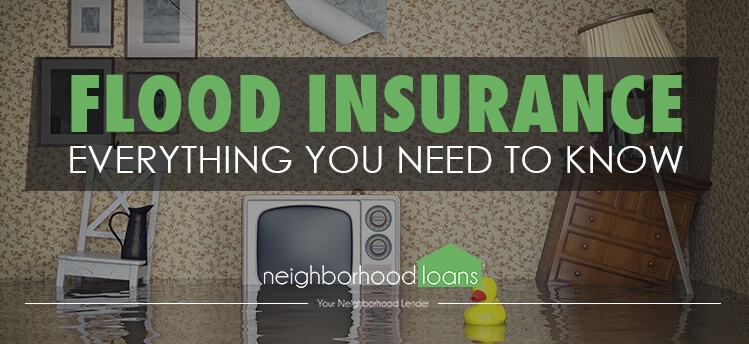
As hurricane season is approaching, people are frantically stocking up on water, boarding up windows and creating evacuation plans.
Preparing for any natural-caused storm is scary. There is a lot that needs to be accounted for. Such as your family, pets, personal belongings and home.
Yes, especially your home – but the homeowner’s insurance will cover any damages, so no worries there, right?
Nope!
Don’t let a reality and a large and expensive bill hit you in the face when you realize homeowner’s insurance does not cover those kinds of damages.
Flood damages are only covered by flood insurance. Which is something entirely different from the standard homeowner’s insurance many people already have.
Not to mention, there’s a maximum amount of how much can be covered and restrictions to what the policy covers.
Before buying a home, check out this article on what NOT to do when buying a home.
To ensure your home is completely protected from any natural disaster such as water damage, take a look on why flood insurance is necessary.
What is flood insurance?
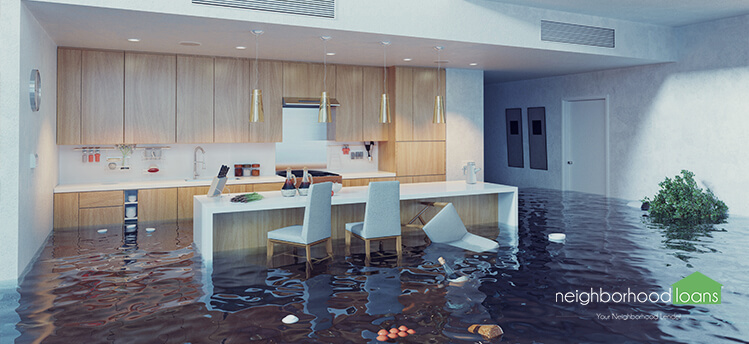
Flood insurance is another type of protection policy you can buy for your home to cover water damages.
It is commonly mistaken that homeowner’s insurance also include flood insurance.
This is false.
Regular homeowner’s insurance does NOT cover flooding.
Regular homeowner’s insurance typically covers damages from fires, windstorms, hail, lightening and vandalism. Damages caused by floods and earthquakes are under a different policy plan.
The flood insurance policy is offered through the Government’s National Flood Insurance Program (NFIP), however, there is a limit as to how much insurance can cover. If you want a higher amount, you may need additional coverage to protect your savings.
The NFIP has two policies:
- One that covers your actual home (building property) up to $250,000.
- One that covers your personal property (contents) up to $100,000.
People can buy one, or both, or neither.
So, how do you determine if your home needs flood insurance?
What does the policy cover?
What doesn’t it cover?
How are rates determined?
Where can you buy flood insurance?
We’ve got the answers to all of your questions!
Do you need flood insurance?
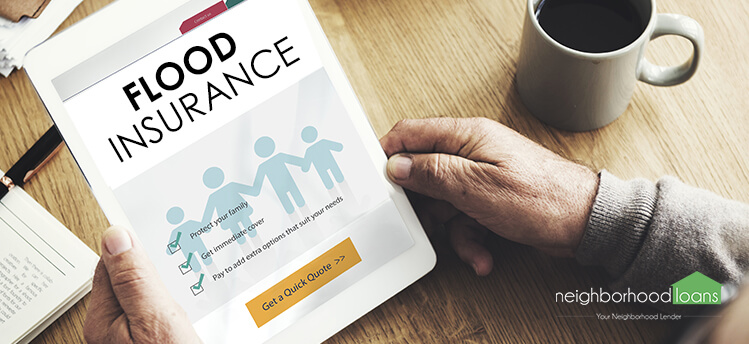
To reiterate, homeowner’s insurance does not cover flood damage.
According to the Federal Emergency Management Agency (FEMA), floods are the nation’s most common and costly natural disaster that spends millions of dollars a year in damages.
Floods can also happen anywhere. It has been reported that more than 20 percent of flood claims have come from properties in low-risk areas.
If you are buying a property that is in a high-risk zone, also known as a Special Hazard Flood Area (SHFA), your mortgage lender will require you to purchase flood insurance in order to get the loan.
In some cases, even if your property is not in a high-risk zone, your mortgage lender may require you to still get insurance.
However, if you live in a zone with a low-risk, you are still eligible to buy flood insurance.
What is classified as a flood?
This may seem like a silly question, but there are specific requirements on what classifies as a flood.
For starters, the cause of the flood matters.
The result of the water damage has to come from a flood or uncommon water related disaster.
For example, the water has to come from an overflowing inland or tidal waters, unusual and rapid accumulation or runoff of surface waters from any source or mudflow (mud that is transported by water, creating a river of mud).
Two acres of land that is normally dry has to be covered by water, or two or more properties have been damaged (one including yours).
The bottom line: flood insurance is only covered if it is a direct result of flooding.
What does the policy cover? What doesn’t it cover?
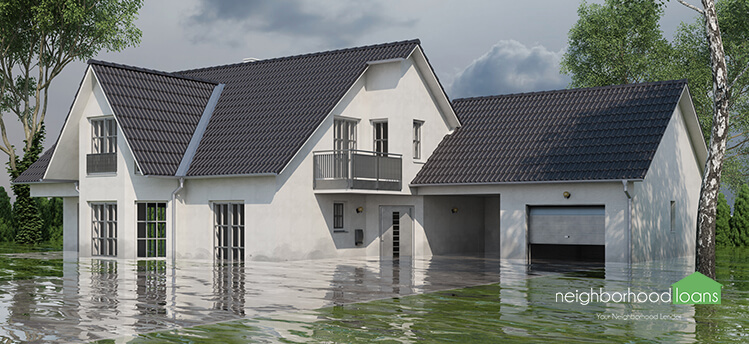
Like many insurance policies, there are specific requirements on what the insurance covers and what it doesn’t cover.
According to FEMA, the NFIP covers direct physical damage by flood to your building and or personal property, which includes the following:
- The electrical and plumbing systems
- Furnaces, water heaters, heat pumps and sump pumps
- Refrigerators, cooking stoves, and built-in appliances such as dishwashers
- Permanently installed carpeting over an unfinished floor
- Permanently installed paneling, wallboards, bookcases and cabinets
- Window blinds
- Foundation walls, anchorage systems and staircases attached to the building
- A detached garage (limited to 10% of your home policy)
- Water heater
The NFIP policy that covers your personal property, also known as contents, will cover things like:
- Clothing, furniture and electronic equipment
- Curtains
- Window AC units
- Portable microwaves and dishwashers
- Washers and dryers
- Your freezer and frozen food
Now, we will cover what is not covered by flood insurance, which includes things such as:
- Items that belong in a safe deposit or bank – precious metals, stock certificates, bearer bonds, cash
- Loss of income
- Temporary housing and other living expenses
- Trees, plants
- Damage caused by moisture, mildew or mold
- Damage caused by earth movement
- Pathways, decks, patios
- Fences
- Seawalls
- Hot tubs, swimming pools
- Cars
- Sewer backups
Did you know that coverage is limited for basements? Yep, the NFIP limits coverage for basements, crawlspaces or any living space underneath ground level. The following will not be covered:
- Bookcases
- Window treatments (i.e. curtains or blinds)
- Carpeting, tile, hardwood, etc.
- Drywall for walls and ceilings (below the lowest elevated floor)
- Walls and ceilings not made of drywall
- In certain cases, staircases and elevators
- Most personal property such as: clothing, electronic equipment, kitchen supplies and furniture
How are flood insurance rates determined?
Unlike mortgage lenders, flood insurance rates do not differ from company to company or agent to agent. This rate is based off several factors.
One being if your community participates in the Community Rating System (CRS), which is a community floodplain management team that oversees any potential damages or threats and enhances public safety. Being in a community that is a part of the CRS can make you eligible for an insurance premium discount.
Other factors that determine the amount you pay for your policy include:
- Year of building construction
- Building occupancy
- Number of floors
- Location of its contents
- Flood risk (is the property in a flood zone?)
- Location of the lowest floor in relation to the Base Flood Elevation on the flood map
- Deductible and amount of building and contents coverage
The bottom line: the price for flood insurance is based on standardized rates and depends on the home’s value and whether or not it is in a flood plain.
Where can you buy flood insurance?

Buying flood insurance is highly recommended and will save you thousands of dollars coming straight out of your pocket.
To buy flood insurance, you will need to work with an insurance agent or an insurer in the NFIP.
You cannot buy directly from the NFIP, but they can assist you if you have any questions or need an insurance agent referral. You can reach them at the NFIP Referral Call Center at 888-379-9531.
However, keep in mind this policy takes about a month to go into effect.
When you buy flood insurance, there is a 30-day waiting period from the date of purchase until your policy goes into effect.
Of course, there are exceptions, such as:
- If you purchase flood insurance while making, increasing, extending or renewing your mortgage loan, there is no waiting period.
- If you select additional insurance as an option on your insurance policy renewal bill, there is no waiting period.
- If your building is recently categorized in the high-risk Special Flood Hazard Area (SFHA) and you purchase flood insurance within the 13-month period following a map update, there is a 1-day waiting period.
So, if you are planning on buying flood insurance near the anticipation of a heavy storm, it will take 30 days to process.
This will not benefit you and it will be too little too late.
Where are the high-risk zones?
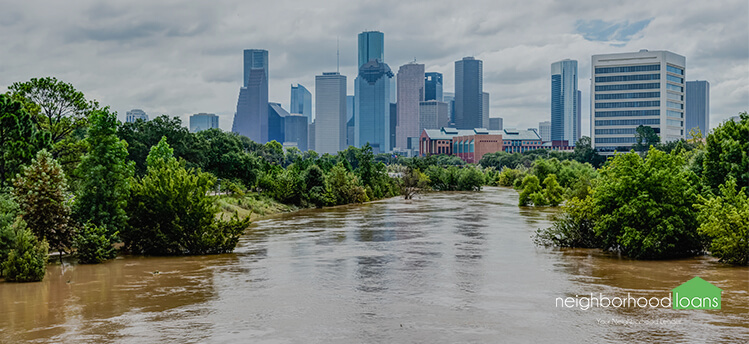
The Flood Insurance Rate Map identifies flood hazard areas with a specific system. These areas are known as Special Flood Hazard Areas (SFHA).
These zones are defined as an area that can be flooded with having a 1 percent chance of being equaled or exceeded in any given year.
FEMA has carefully analyzed every region in the United States and created a list of zones in low, moderate and high-risk areas. Regions are given special code names to better understand what areas are in which zone.
SFHAs (high-risk areas) are labeled as Zone A, Zone AO, Zone AH, Zones A1-A30, Zone AE, Zone A99, Zone AR, Zone AR/AE, Zone AR/AO, Zone AR/A1-A30, Zone AR/A, Zone V, Zone VE, and Zones V1-V30.
Moderate flood areas are labeled as Zone B or Zone X (shaded on the map).
Areas with minimal flood threat are areas outside of the SFHA, which are labeled as Zone C or Zone X (unshaded on the map).
If you want to plug in your address and see it it is in a flood plain, visit FloodSmart.gov. This website will give your information on risks, premiums and agents.
However, do not use this tool as your final deciding factor to conclude if your home is in a dangerous zone.
Takeaway
As you can see, flood insurance is a lot more complex and crucial for today’s homeowners. With hurricane season approaching, fast and deadly, it’s a no-brainer to get insured.
To fully protect your family, assets and home from any type of flooding, this insurance can benefit you immensely. Whether or not you are in a flood risk zone, it’s better to be safe than sorry and buy flood insurance.